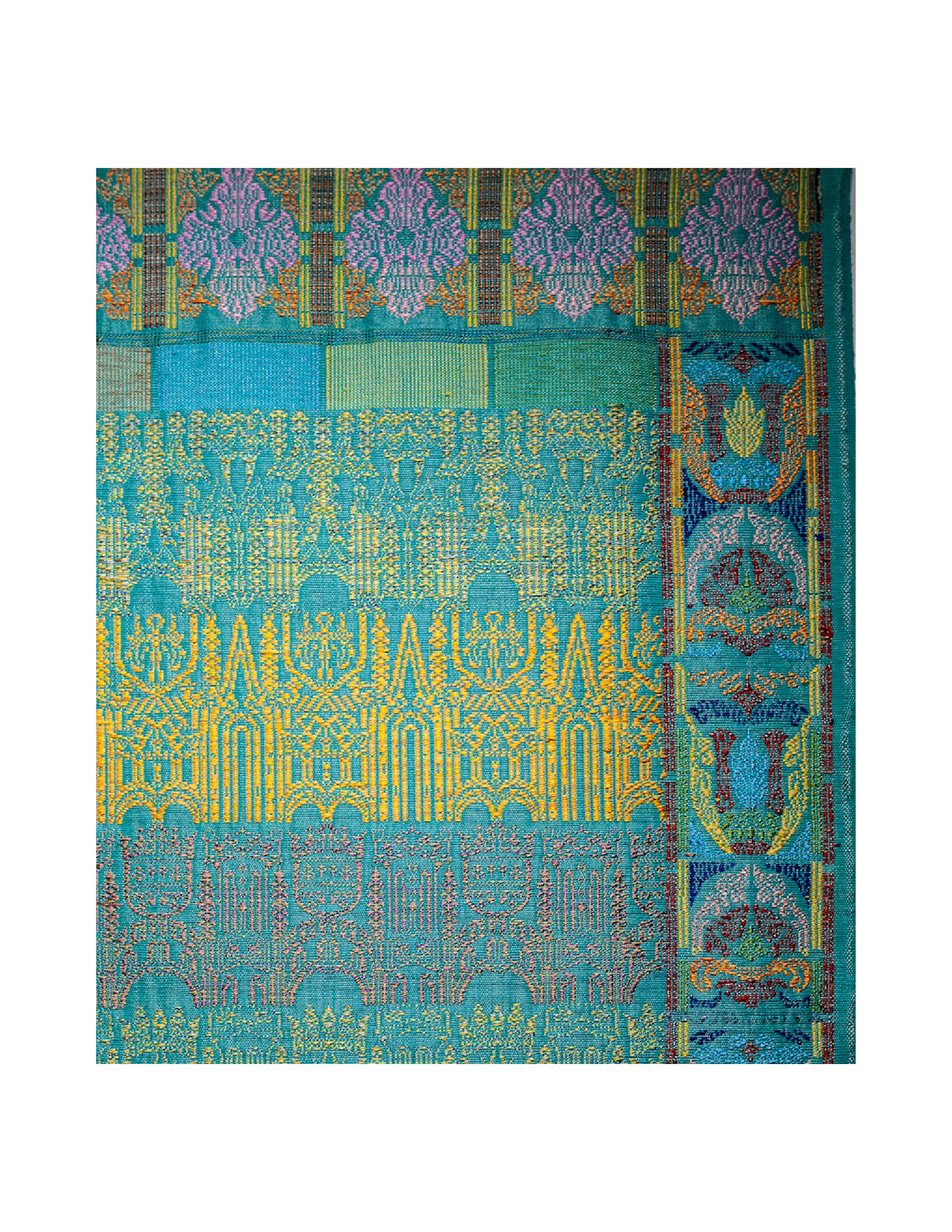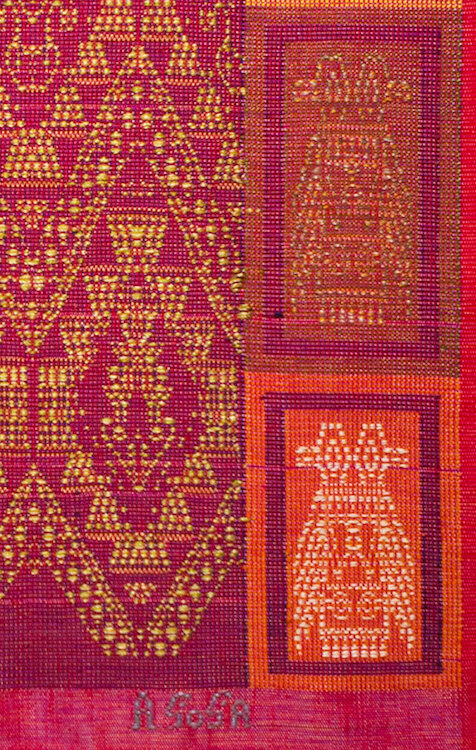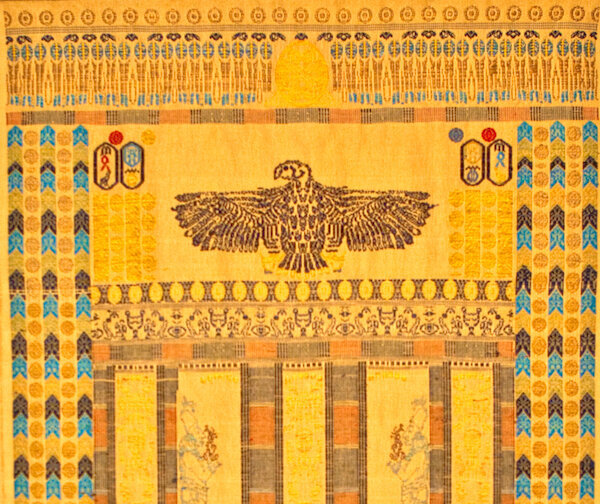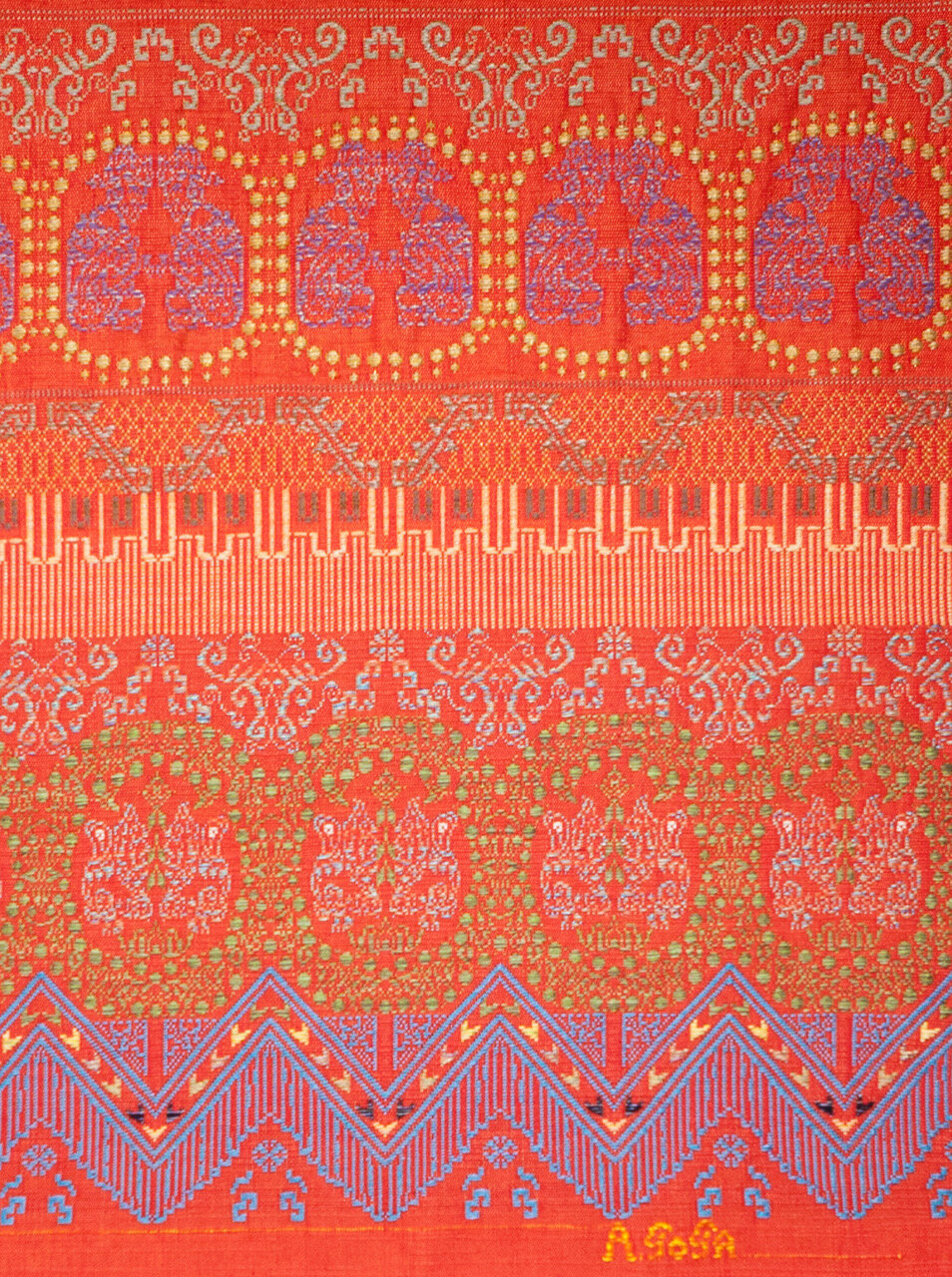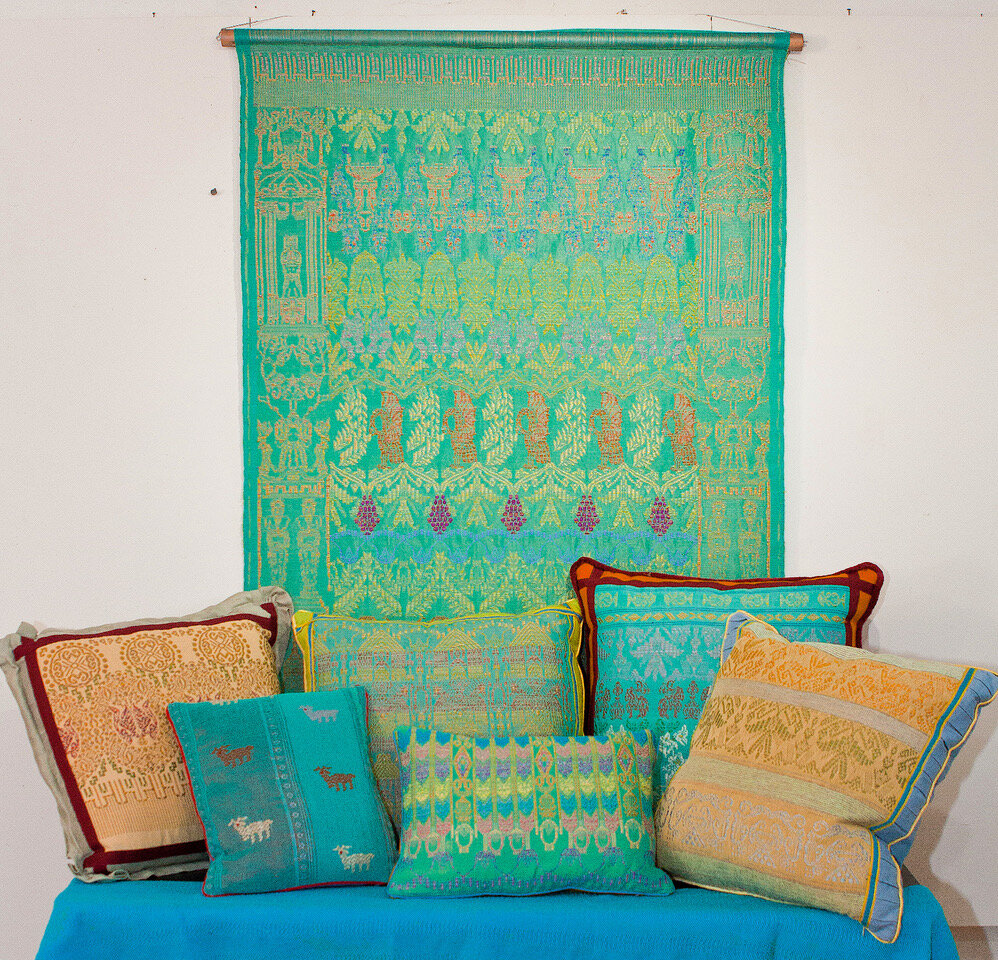ARMANDO SOSA
Master Weaver
Through my weaving, I am working to express my dreams, my memories, the overlapping cultural influences of my life in the United States, and my aspirations for the future. The traditional motifs repeated in different forms and colors throughout my textiles are a means of connecting with, celebrating, and preserving the rich and complex Guatemalan culture of my childhood.
But the work I do connects to many cultures, not just Latin American culture. The looms I’m working with, which I built, are based on designs from looms made in China and Europe thousands of years ago. The designs I use in the tapestries are also centuries, if not millennia old. Some have been discovered in tombs or other lost places. I feel that it is important to keep these beautiful and sometimes ancient designs alive, to keep them adorning our lives.
Not only the designs and looms, but the work of weaving is itself a continuation of a thousand year old craft rarely practiced today which takes care and time. Weaving is a slow and repetitive process. Each tapestry requires at least one hundred hours to complete. For this and other reasons, it is a craft and a tradition that could very easily be lost in our fast paced world.
I hope the pieces I weave express the time, attention, joy, and love they contain, and that each communicates my sense of history, culture, and their value to us all
2024 ARTWORK:
2022 ARTWORK:
2021 ARTWORK:
2019 ARTWORK:
2018 ARTWORK:
TOURS THIS ARTIST PARTICIPATED IN:








